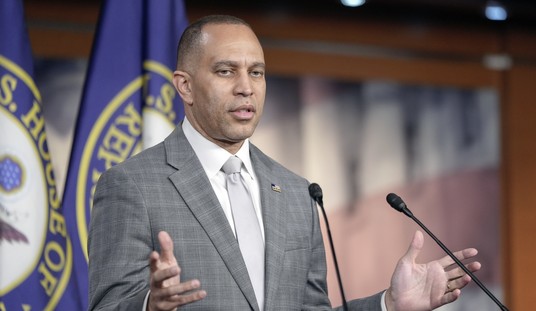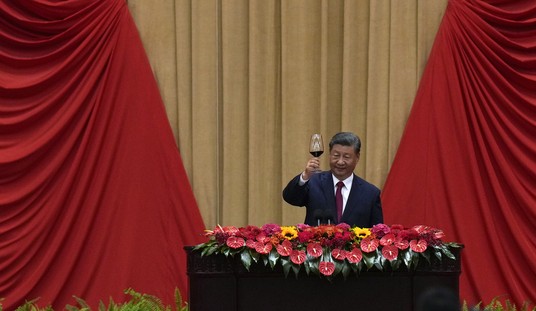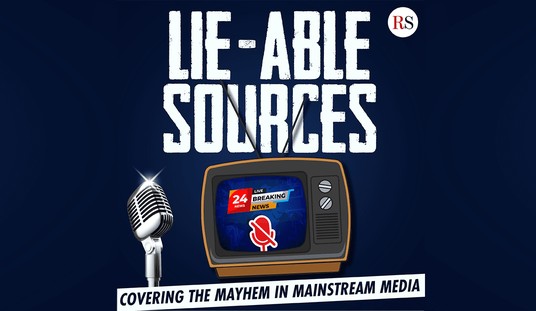One of the hexes placed on our society, courtesy of the university system, is in teaching students how to deliver the overwrought thinkpiece. Instead of crystallizing thoughts into a concise format and delivering a concept in a digestible form, collegians are prodded to expand a concept into a “Dante’s Inferno”-sized treatise that few want to read.
At CNN, we were delivered one of these societal curses from Madeline Holcombe, and it bears all of the traits of a collegian’s thesis: An arcane subject of little interest is presented in consummate fashion beyond interest and delivered in a 3,000+ word examination.
Holcombe became bothered by something in her personal life and decided that this was emblematic of a swelling cultural trend that needed her to grind out an epically-sized rebuttal. The subject? “After Years of Progress On Gender The Male Gaze Is Back.” You already get the sense this will deliver all of the appeal of a tree branch falling and setting off a car alarm at 3:00 a.m.; it serves no purpose, no one wants to hear this, and it goes on far longer than is needed.
The real amusement is that in a piece that lacks appeal and repels interest, CNN has this “Health-Wellness” piece parked for subscribers only. So for the sake of your amusement, I breached their paywall and carved into this stunted mess to embark on a forensic analysis.
Be forewarned: There is a high likelihood of man-splaining ahead!!!
Does it feel like entertainment, advertising, and social media are switching back to a straight man’s fantasy? The trend could impact everyone negatively – including men, experts say.
And away we go! You get the hint of toxic masculinity, then there is the daft concept that catering to men can have an adverse effect on said men. And, as is always the case, when you get the tagline of “experts say,” you know you are in for garbage agitprop. Find two voices to support your fever-dream theorizing, and your entire premise becomes legitimized!
In the past decade in particular, I saw the evidence of progress in my media diet. The movies, shows, books and advertisements I consumed were increasingly giving women a seat at the table.
Right away, we get typical feminist hypocrisy. For a generation, they have declared that men acting chivalrously is belittling aggression. Holding doors for women or offering them a seat has been categorized as an act of misogyny. We get patent contradictions in just the second paragraph.
A change in the political environment seemed to connect with a social change that brought back narrow, and at times constrictive, ideas of womanhood depicted in media.
Recognizing that which appeals to us is wrong, and we are to bemoan the fact that foisting body positivity and accepting fringe figures as mainstream (which are not narrow and constrictive, somehow) is falling by the wayside.
The recent rise of weight loss medications coincided with social media influencers sharing ways to get smaller and no longer celebrating bodies of all sizes.
A reminder: This condemnation of the desire to improve one’s physical condition appears under CNN’s “Health-Wellness” banner.
How had these discarded ideas made their way back into circulation? Didn’t we all agree we were through with them?
Um, NO, Madeline. Your hectoring and lectures did not mean that everyone agreed with the activist screeching.
The male gaze came roaring back this summer. American Eagle ran a controversial ad campaign starting in July. The ads sell jeans to women featuring actor Sydney Sweeney, who many men see as a sex symbol, insinuating the clothing would make men find them more attractive.
Ah, yes, we just knew this would become the flashpoint. The idiotic hysteria this campaign created was summed up pretty easily: “We don’t want sexy women to be regarded as an ideal!” Well, sorry gals - guys dig hot women.
“Most typically, the male gaze is about representing women in media solely to satisfy heterosexual men,” said Dr. Linda Tuncay Zayer, professor of marketing and John F. Smith, Jr. Chair in Business Administration at the Quinlan School of Business at Loyola University Chicago.
You just have to love this. Dr. Zayer embodies one of my maxims in life - the longer someone’s title becomes, the less they have to say that is valid. In this case, it took an “expert” to surmise that heterosexual men prefer comely females. Imagine the years of schooling needed to compile that data.
It’s Bond girls. And a long, lingering shot panning up a woman’s body in an advertisement for soda. And a social media star making a recipe while all dolled up and explaining her steps in a soft, sultry voice.
You have to appreciate the lack of introspection on display. Does Madeline believe that if you give us a cranky personality and an unappealing physique with no care to be presentable, men are supposed to be drawn by that visage? Sorry to inform you, Mrs. Holcombe, that is the opposite of clickbait.
On the other hand, there is the female gaze, with shows and movies like “Bridgerton” and “Portrait of a Lady on Fire” demonstrating how women can be sexual without being objectified.
She discusses this in the context of individual empowerment, as well as how women interact with each other. This avoids a very basic concept, that there are plenty of instances of women savoring the appearance of men. Look at the current career path of actor Glenn Powell. I have it on empirical authority that when he is on screen, the ladies tend to (dare I say it) objectify him, to the extent that any men in the room might be forgotten for a time. Somehow, this reality is not delivering a crushing blow to our society, it seems.

Throughout history, when the pendulum swings one way, it tends to eventually swing back the other way. “Historically speaking, there’s almost always a backlash after women have achieved something,” said Dr. Katherine Sredl, lecturer of marketing at Loyola University Chicago’s Quinlan School of Business.
Note the decidedly feminine approach here. When this swing is in their favor, it is regarded as noble and healthy. As it swings back the other way, however, it becomes a “backlash.” I will just come out and suggest something: This appears to be a result of “The Female Gaze.”
But those trends were followed by the recent retro-popularity of “trad wives” and a resurgence of “thinspiration,” “skinny legends” and “what I eat in a day” videos that revived a restrictive beauty ideal on social media.
Here is where Holcombe’s entire pretext begins to fall apart. After pushing for the empowerment of her gender and seeing cultural representations that women favor, she now denigrates these now popular trends – that women are CHOOSING to engage in. How exactly do you promote women doing what they want, but then condemn them when they do just that? Apparently, if a woman wants to get herself in shape for her self-esteem, it is celebrated, but if her goal is to appeal to men, she is a turncoat on her gender. Doing whatever she wants, therefore, is not the actual lesson here. She needs to do it for the “proper” reason.
The concern isn’t a woman baking in her finest pearls or wanting to be sexy — that is fine, and she should be allowed to do that, Zayer said. There are real-life implications, however, when spreading a message that women should only strive to please men and men should only see the women in their lives in one way.
There is their flaw, on full display – the use of “only.” Holcombe and her experts try to allow for the women who choose these pathways for themselves, but look at the need to inject their viewpoint into what other women decide for themselves. If a female wants to get into shape to attract a man - for herself - she is not dictating that ALL women can ONLY act in this fashion. It is the mindset of the feminists who think that all women should only subscribe to feminist dogma.
Often the traditional beauty standards put forward by the male gaze are unrealistic. They favor thin bodies that few people can maintain in a healthy way, Zayer said.
To display the idiocy of this argument, let’s swing back to the body positivity realm. When she was celebrating an ad campaign that features a corpulent model in designer duds, by her own logic, doesn’t that mean Holcombe is dictating that ALL women should be stuffing their faces to achieve a 300 lb. physique few can achieve? No? Well then, there goes your pontificating lecture blasted into confetti.
The male gaze also limits men when it encourages viewing women as objects rather than complex, multidimensional human beings, Zayer said. In a world where male loneliness is a crisis, the isolation problem gets even worse when the culture tells men that women (about half the population) are for beauty, sex and running a household, and are not viable options for real emotional connection and partnership.
Finally, we get to the supposed danger for men. Again, we see the need to truck in other messaging that is not being delivered. Where in the culture is this instruction that women are not to be regarded as worthy of emotional connections? There is a difference between initial appeal and lasting connections. That is what the process of dating is all about; you are initially drawn to someone, then you learn about them to see if there is more.

This piece from CNN intends to condemn the original process of being attracted to someone. What most of Holcombe's screed boils down to is that the act of personally regarding people as favorable/unfavorable is improper. All individuals need to be regarded equally; otherwise, some form of exclusionary intolerance is in play.
This mindset defies intrinsic desire. If I were to say I prefer redheads, does Holcombe and her experts regard this as intolerance towards blondes? If you find taller women appealing, is it bigoted thinking towards diminutive ladies? This is the hitch in the lecture delivered. Personal preferences must carry with them some form of intolerance, goes their thinking.
What this comes down to is that it is Holcombe who does not like the “Male Gaze.” As she tries to promote the individual thinking of women, she dismisses those women who may want to court the male eye. A female who wants to get in shape to appeal to men is deemed improper and needs to forsake doing something for her well-being because she is working against the interests of others.
The message becomes, “Don’t be true to yourself, be loyal to Holcombe and her tribe.” Which, ironically enough, is the polar opposite of promoting individual female empowerment.















